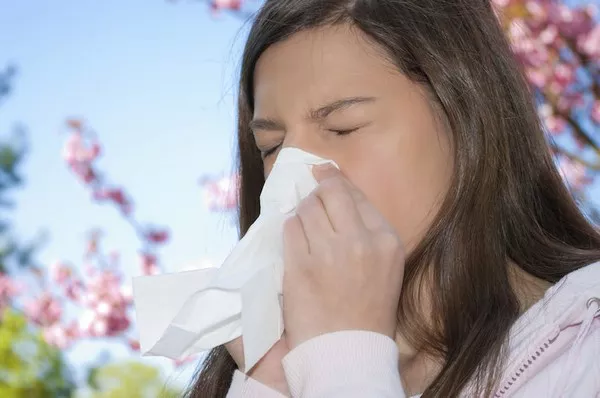Cold allergies, also known as cold urticaria or cold-induced urticaria, are a rare but potentially troublesome condition in which exposure to cold temperatures triggers allergic reactions. Unlike common winter allergies, cold allergies are not caused by the typical winter allergens like dust mites or mold spores. Instead, they stem from an abnormal immune response to cold temperatures. In this article, we will delve into the causes, symptoms, and management strategies for cold allergies, shedding light on this intriguing and often misunderstood condition.
Understanding Cold Allergies
Cold allergies are classified as a physical or non-IgE mediated allergy, meaning they are not triggered by the immune system’s typical allergy antibodies (IgE). Instead, they are caused by an overreaction of the skin’s mast cells to cold temperatures, releasing histamines and other chemicals that lead to the characteristic allergic reactions. Cold urticaria is typically idiopathic, which means the exact cause remains unknown in most cases.
The Role of Temperature in Cold Allergies
Exposure to cold temperatures is the primary trigger for individuals with cold allergies. Even brief contact with cold air, water, or objects can lead to allergic reactions. Some people may experience symptoms by holding cold items, swimming in cold water, or being exposed to chilly winds. The threshold temperature at which reactions occur can vary among individuals, with some being more sensitive than others.
Symptoms of Cold Allergies
The symptoms of cold allergies can manifest within minutes of cold exposure and may include:
a. Cold Urticaria (Hives): The most common symptom is the development of itchy, red welts or hives on the skin. These raised areas may vary in size and shape and can be particularly uncomfortable in areas where cold exposure occurs, such as the hands, face, and feet.
b. Swelling (Angioedema): In more severe cases, cold allergies can lead to deeper swelling in the skin layers, known as angioedema. This may cause puffiness around the eyes, lips, or other extremities, and in rare instances, it can affect the throat, leading to breathing difficulties.
c. Systemic Reactions: Some individuals may experience systemic reactions beyond the skin, such as headaches, dizziness, or gastrointestinal disturbances, following cold exposure.
d. Anaphylaxis: Although rare, in extreme cases, cold allergies can trigger anaphylaxis, a life-threatening allergic reaction characterized by severe breathing difficulties, drop in blood pressure, and loss of consciousness. Anaphylaxis requires immediate medical attention and intervention with epinephrine.
Cold-Dependent and Cold-Induced Urticaria
Cold urticaria can be categorized into two types: cold-dependent and cold-induced urticaria.
a. Cold-Dependent Urticaria: This form of cold urticaria is dependent on the rate of temperature change and typically occurs after rapid cooling of the skin, such as swimming in cold water. Symptoms can emerge within a few minutes and may persist for an extended period.
b. Cold-Induced Urticaria: In this type, symptoms are triggered by exposure to cold air or objects, such as holding a cold beverage or walking in cold weather. The reaction is more immediate and may subside within an hour after warming up.
Risk Factors and Diagnosis of Cold Allergies
While cold allergies can affect individuals of any age, they are more commonly diagnosed in young adults. Those with a family history of cold allergies or other atopic conditions, such as asthma or hay fever, may have a higher risk of developing this condition.
Diagnosing cold allergies requires a comprehensive evaluation by a healthcare professional. The diagnosis is often based on the patient’s clinical history, a physical examination, and specific tests, such as the “ice cube test.” During this test, a small ice cube is applied to the forearm for a few minutes, and the appearance of hives or other allergic reactions confirms the diagnosis.
Management Strategies for Cold Allergies
Managing cold allergies involves a combination of preventive measures, lifestyle adjustments, and medical interventions to minimize exposure and alleviate symptoms.
a. Avoidance of Cold Triggers: The primary strategy is to avoid cold exposure as much as possible. This may involve staying indoors during cold weather, wearing insulated clothing, and using gloves when handling cold objects.
b. Gradual Adaptation: Some individuals may benefit from gradually adapting their skin to cold temperatures through a process called cold desensitization. This involves exposing the skin to gradually cooler temperatures over time to reduce sensitivity.
c. Antihistamines: Over-the-counter antihistamines may provide relief from mild symptoms by blocking the action of histamines released during an allergic reaction.
d. Epinephrine Auto-Injector: Individuals with a history of severe reactions or anaphylaxis may be prescribed an epinephrine auto-injector to use in case of emergencies.
e. Allergist Consultation: Working closely with an allergist can help individuals develop personalized management plans, receive proper guidance on self-management, and address any potential complications.
Cold Allergy vs. Cold Intolerance
It is essential to distinguish between cold allergies and cold intolerance, as they are distinct conditions with different underlying mechanisms. Cold intolerance refers to the body’s reduced ability to maintain a stable body temperature in cold environments. Symptoms may include cold extremities, chills, and shivering but are not triggered by an immune response. Cold intolerance is generally not life-threatening and is often managed by keeping warm in cold weather.
Conclusion
Cold allergies, or cold-induced urticaria, are unique and rare conditions characterized by the skin’s abnormal response to cold temperatures. Exposure to cold air, water, or objects can trigger allergic reactions, ranging from hives and itching to more severe angioedema and anaphylaxis. Individuals experiencing symptoms after exposure to cold temperatures should seek medical evaluation for proper diagnosis and management.
While there is no cure for cold allergies, adopting preventive measures and collaborating with healthcare professionals can help minimize symptoms and improve the overall quality of life for those affected. By understanding the causes, symptoms, and management strategies, individuals with cold allergies can navigate the challenges posed by this intriguing condition and lead fulfilling lives despite the cold’s unpredictable effects.


